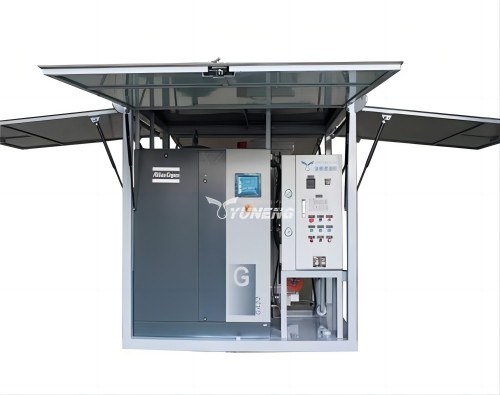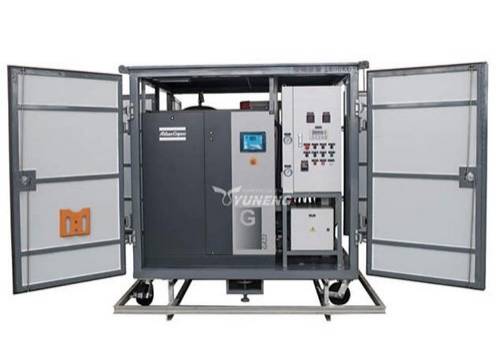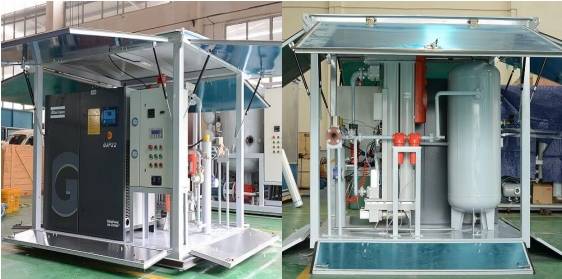What is the Role of Dry Air Generators in Power Transformers?
Power transformers are important components in distribution systems that facilitate efficient power transmission between different voltage levels. These transformers contain insulating materials, usually including oil, to effectively manage and dissipate the heat generated during operation, thereby maintaining their reliability and extending their operating life. However, the presence of moisture poses a huge threat to the integrity of the insulation system of power transformers, leading to performance degradation, increased maintenance costs, and the possibility of catastrophic failures.
To counteract this danger, a dry air generator is used to maintain a dry and moisture free environment inside the transformer. In the upcoming article, we will delve into the use of dry air generators in power transformers and elucidate their key role in ensuring the operational functionality and lifespan of transformers

What is a Dry Air Generator?
A dry air generator is a specialized device used in various industrial applications, including the electrical power industry, to produce dry and moisture-free air. Its primary purpose is to maintain a controlled environment with low humidity levels. Dry air generators are particularly crucial in environments where moisture can be detrimental, such as in power transformers, circuit breakers, and other electrical equipment.
The Primary Role of a Dry Air Generator
- Moisture Control with Dry Air Generators
Moisture poses a formidable challenge to power transformers. It infiltrates the intricate insulation system composed of materials like paper, pressboard, and oil, resulting in potentially catastrophic consequences such as the compromise of the transformer’s dielectric strength and the onset of electrical faults. Enter the dry air generator, with its principal objective being the regulation of moisture levels within the transformer. By deploying dry air to displace or absorb unwanted moisture, this device assumes the role of a steadfast protector, ensuring dry insulation materials, reducing the likelihood of electrical breakdowns, and preserving the transformer’s longevity.
- Moisture-Related Corrosion Prevention
The moisture inside the transformer not only affects the insulation; It may also lead to corrosion of key internal components such as the core and windings. A dry air generator helps to prevent this corrosion by maintaining a low humidity environment inside the transformer.
- Combatting Oxidation
Dry air not only blocks moisture; It also helps to reduce oxidation in transformer insulation oil. Oxidation can reduce the quality of oil and its insulation performance, which may affect the overall performance of transformers. A dry air generator helps to maintain the oil in its optimal state and improve the efficiency and lifespan of transformers.

More Functions of Dry Air Generators
- Contaminant Control
Moisture isn’t the only threat to the transformer’s insulation system. Contaminants like dust and dirt can also undermine its integrity. Dry air generators often include filtration systems that diligently remove these contaminants, maintaining a pristine internal environment.
Moisture is not the only threat to the insulation system of transformers. Contaminants such as dust and dirt can also damage its integrity. Dry air generators typically include filtration systems that strive to remove these pollutants and maintain the original internal environment.
- Climate Adaptation
In cold climates, the moisture inside the transformer can cause icing, which can interfere with the operation of the transformer. The dry air generator ensures that the internal humidity of the transformer is kept low, prevents icing, and achieves reliable performance in extremely cold conditions.
- Early Warning Systems
Modern dry air generators are typically equipped with complex monitoring and control systems. These systems provide real-time data on humidity levels and transformer conditions as early warning systems. These data allow for proactive maintenance, enabling timely intervention before issues escalate.
- Mitigating Safety Hazards
The failure or malfunction of power transformers may cause significant safety hazards. This includes fires, explosions, and damage to surrounding equipment. By maintaining the insulation system in its optimal state, dry air generators reduce the likelihood of transformer failures, thereby improving the overall safety of substations and power grids.

- Improving Grid Reliability
A well maintained transformer can handle higher power loads without overheating or voltage drop issues. Dry air generators play a crucial role in ensuring that transformers can operate at full load, thereby improving the reliability and stability of the power grid.
- Realizing Cost Efficiency
Although dry air generators require initial investment, they can save significant costs over the lifespan of transformers. By extending service life, reducing maintenance costs, and preventing expensive malfunctions, dry air generators provide significant investment returns.
- Meeting Regulatory Standards
Power transformers must comply with strict industry standards and regulations to ensure safety and reliability. The dry air generator plays a crucial role in helping transformers meet these standards by maintaining necessary humidity levels and preventing potential non-compliance issues.
Conclusion
Dry air generators are essential for power transformers. They are not just about keeping the air dry. They protect the insulation of transformers, prevent moisture problems, and ensure their long-term reliable operation. By controlling the internal environment of transformers, they can prevent expensive faults, extend the lifespan of transformers, and help maintain grid stability. In the constantly changing world of power distribution, these systems are crucial for maintaining a stable power supply.

